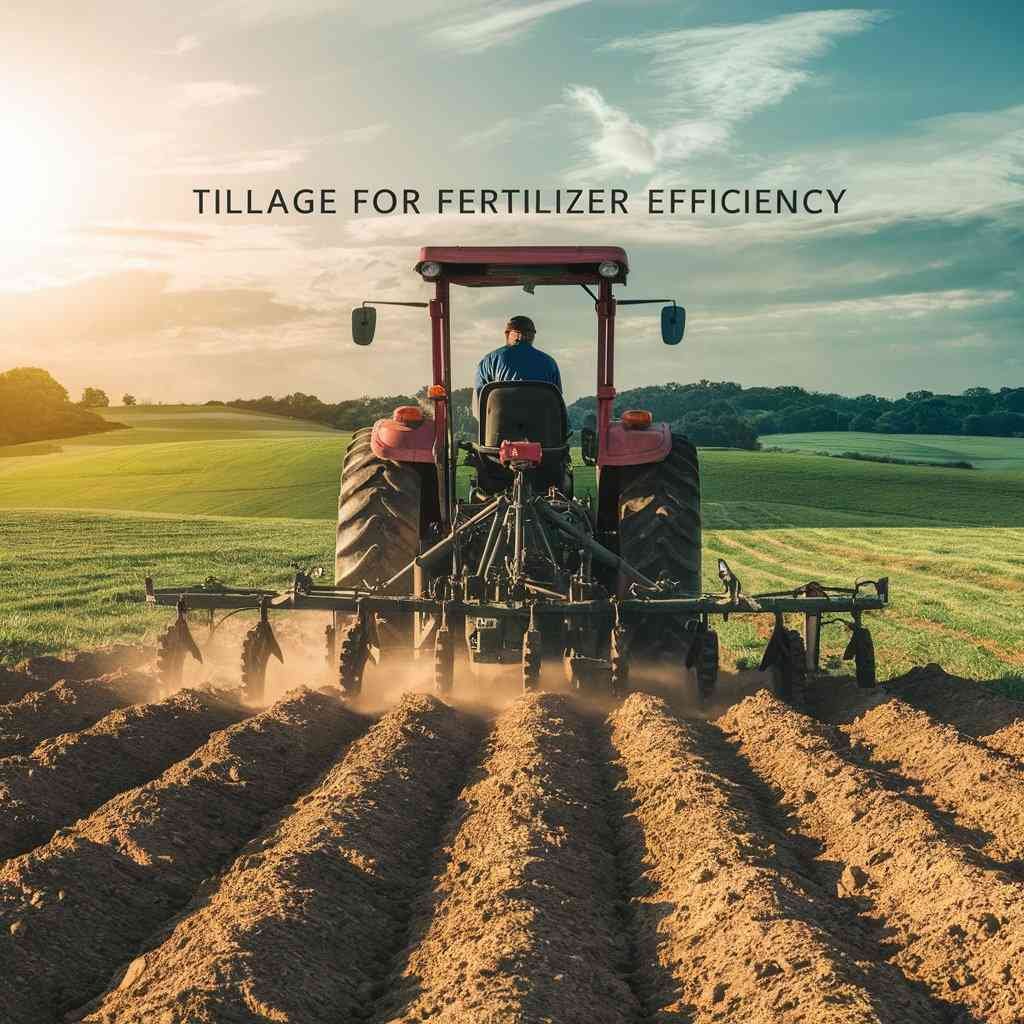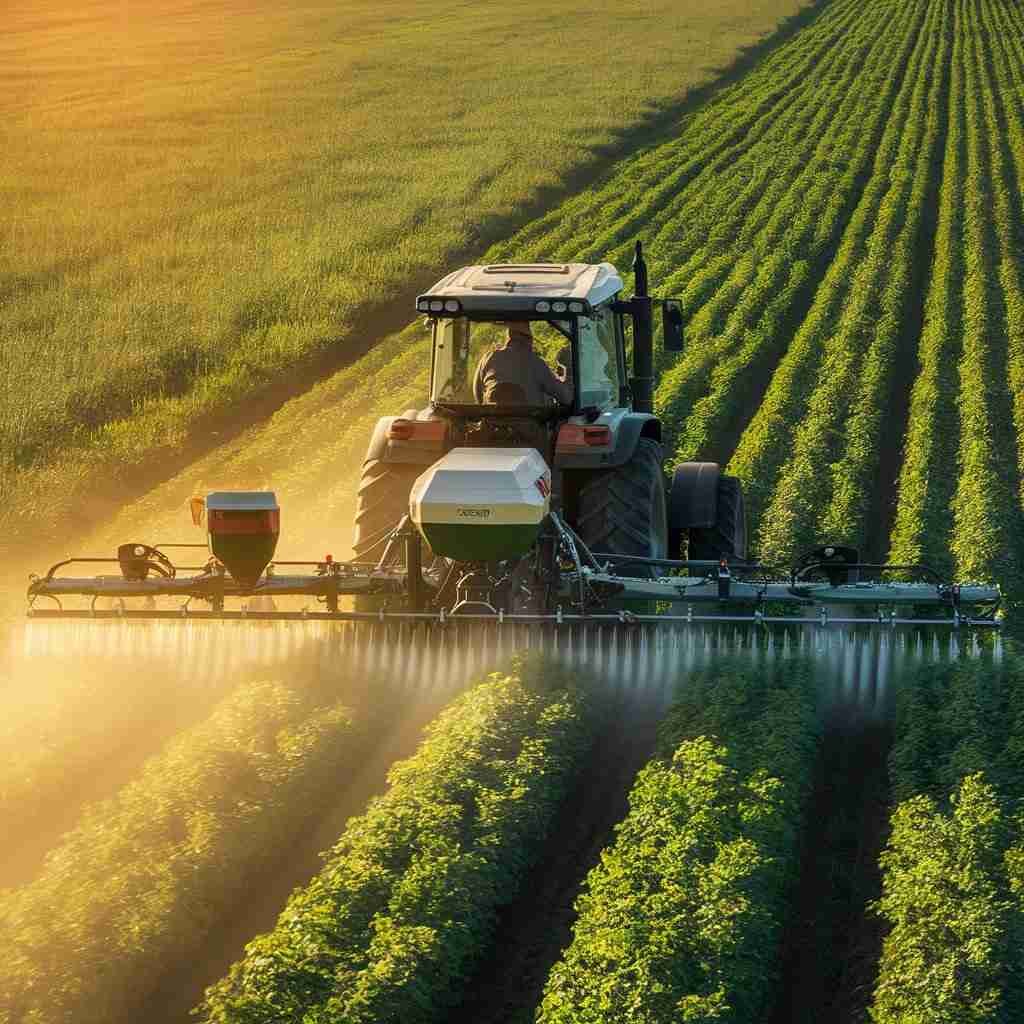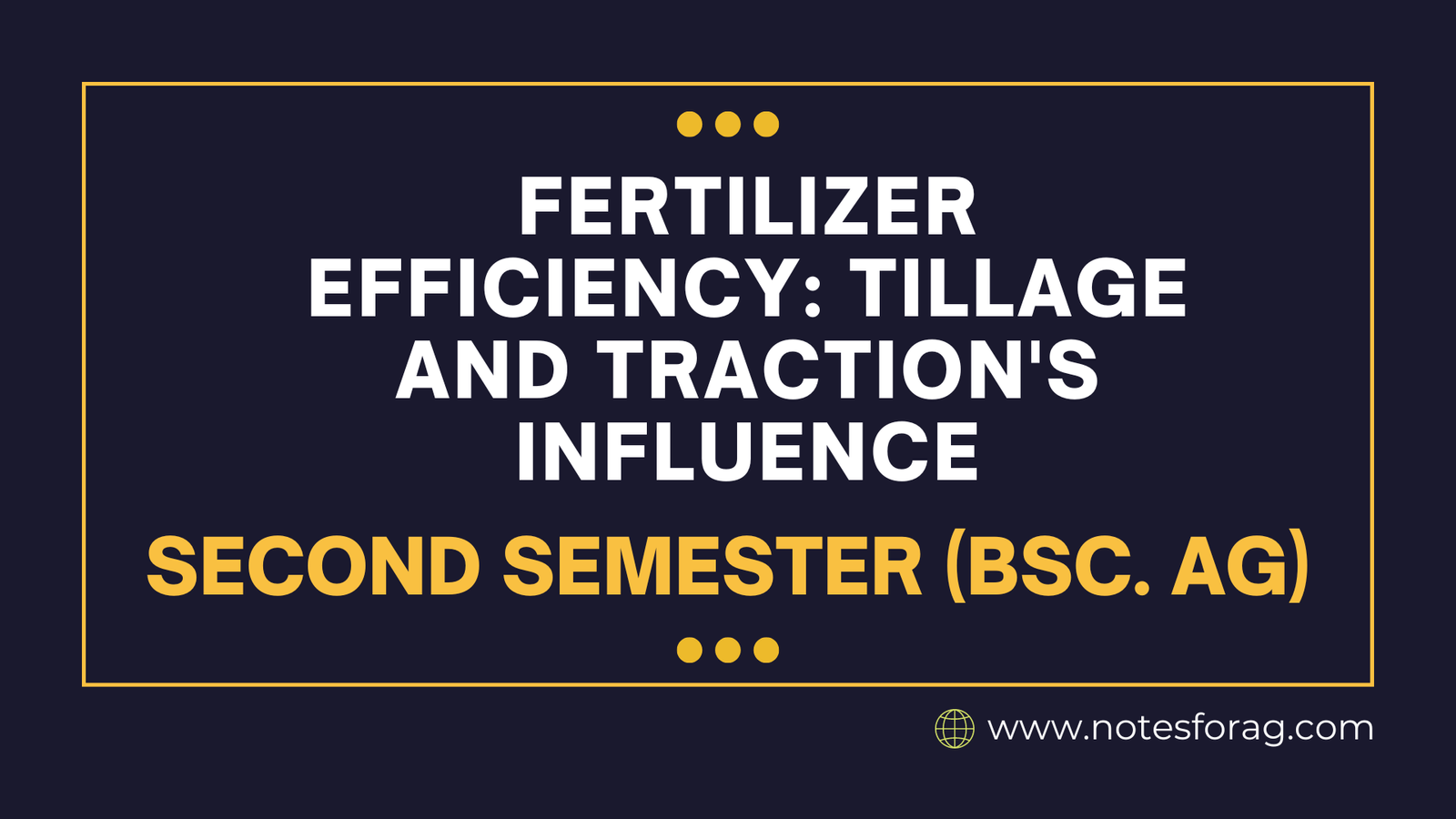Fertilizer efficiency is affected by a number of factors, including crop type, environmental conditions, crop rotation and cover crops, fertilizer type and application, and soil parameters (pH, texture, and organic matter). Sustainable agriculture depends on maximizing fertilizer use efficiency and comprehending how tillage and traction affect soil fertility. Conventional or conservation tillage techniques have an impact on the organic matter content, erosion, and soil structure. Heavy machinery or traction can compact the soil, which hinders root development and water infiltration. Soil fertility and nutrient utilization efficiency can be increased by the application of controlled traffic farming, enhanced tillage techniques, and adaptive fertilizer management.
Table of Contents
Introduction to Fertilizer Efficiency
The efficiency with which plants use the nutrients provided by fertilizers is referred to as fertilizer efficiency. Optimizing fertilizer efficiency is important in modern agriculture for a number of reasons. It affects crop production directly, first and foremost. The proper amount of nutrients are given to plants at the right time through efficient fertilizer use, which promotes healthier growth and ultimately larger harvests. This has the potential to greatly increase agricultural productivity, enabling the world to feed its expanding population.
Furthermore, less of an influence on the environment is associated with effective fertilizer usage. Fertilizers can seep into water bodies and cause eutrophication and nutrient contamination if they are overapplied or improperly managed. This can cause hazardous algal blooms to proliferate and has a detrimental impact on aquatic environments. Farmers can reduce nutrient runoff and safeguard biodiversity and water quality by maximizing fertilizer efficiency.
Fertilizer efficiency is influenced by a number of important parameters, such as crop type, climate, and soil health. However, tillage and traction are two important activities that have a big impact on how well crops use fertilizers. Traction affects the mechanical features of fertilizer application, whereas tillage methods affect the structure and distribution of nutrients in the soil. Farmers can improve agricultural results by optimizing their fertilization practices by knowing how these components interact.
The Role of Tillage in Fertilizer Efficiency
The efficacy of fertilizers used in agricultural production is significantly influenced by tillage techniques. Different tillage techniques, including no-till farming, limited tillage, and conventional tillage, have different effects on the uptake and efficiency of fertilizers due to their respective effects on soil structure, nutrient distribution, and root development.

Traditionally, tillage has meant turning the soil over completely, which can improve the soil’s ability to absorb fertilizers by thoroughly mixing the nutrients. Nevertheless, this method may also cause structural disturbances in the soil, which over time may result in erosion and organic matter loss. By retaining soil structure and reducing erosion, less tillage, on the other hand, disturbs the soil less. In order to help plants absorb nutrients, this technique can increase the amount of organic matter and soil moisture retention.
The complex connection between fertilizer effectiveness and tillage techniques has been clarified by recent study. For example, research indicates that no-till systems can increase the efficiency of nitrogen utilization by lowering nitrogen losses due to denitrification and leaching. Additionally, case studies have shown that by preserving larger quantities of soil organic matter, lower tillage can improve phosphorus availability. These results emphasize how crucial it is to use the right tillage techniques depending on the particular soil and crop conditions in order to maximize fertilizer efficiency.
Traction and Its Impact on Fertilizer Use
The traction of agricultural machinery is closely related to the effectiveness of fertilizer application. The equal distribution and absorption of nutrients by the soil is greatly influenced by traction, which is the grip that exists between the tires of the machinery and the soil surface. Numerous elements, including the kind of equipment being utilized, tire pressure, and the level of soil compaction, are crucial to this process.

The traction of various agricultural machinery, such as spreaders and tractors, varies according on their operating characteristics and design. For example, equipment with wide, low-pressure tires tends to apply less force on the ground, reducing soil compaction. Less compacted soil allows fertilizers to be distributed more evenly, which improves plant roots’ ability to absorb them. On the other hand, equipment with narrow, high-pressure tires may seriously compact the soil, resulting in an uneven fertilizer distribution that may impede plant development and lower agricultural yields.
The goal of technological developments in agricultural equipment has been to maximize traction in order to increase fertilizer usage efficiency. Modern innovations like adjustable tire pressure systems enable farmers to alter tire pressure according to the state of the soil, guaranteeing maximum traction and the least amount of soil disturbance. Furthermore, the advancement of track-based technology has demonstrated potential in mitigating soil compaction and enhancing fertilizer dispersion.
Integrating Tillage and Traction for Optimal Fertilizer Efficiency
Maximizing fertilizer effectiveness requires a multifaceted strategy that incorporates traction and tillage techniques. The goal of this all-encompassing approach to soil management is to improve nutrient uptake and support environmentally friendly farming methods. Farmers need to think about a number of important things in order to accomplish this, such as seasonal planning, adjusting machinery, and continuing soil health monitoring.
To maximize the effectiveness of fertilizers, seasonal planning is essential. Crop-specific requirements and the current climate should be taken into account while determining tillage and traction techniques for farmers. To improve root penetration and nutrient absorption, for example, decreasing the amount of tillage done during wet seasons can assist maintain soil structure and avoid compaction. In contrast, deliberate tillage can improve soil moisture retention and nutrient availability during dry spells by incorporating fertilizers and organic matter into the soil.
Integrating tillage and traction for increased fertilizer efficiency also requires significant machinery modifications. Achieving uniform fertilizer distribution and minimizing soil disturbance requires accurate equipment calibration and upkeep. One way to assist farmers apply fertilizer more properly and minimize waste and environmental effect is by utilizing precision agricultural instruments like GPS-guided tractors. Further encouraging healthy root development and effective nutrient absorption is the reduction of soil compaction achieved by modifying the tire pressure of tractors and other machines.
Crop type, fertilizer type and delivery technique, soil qualities (pH, texture, and organic matter), weather conditions (rainfall, temperature), and agricultural management techniques (crop rotation, use of cover crops) all have an impact on how efficiently crops use fertilizer. Conventional and conservation tillage techniques affect soil structure, organic matter levels, and erosion; heavy mechanical traction can compact soil, which hinders root development and water infiltration. Soil fertility and nutrient utilization efficiency are increased by the use of controlled traffic farming, enhanced tillage techniques, and adaptive fertilizer management.
Frequently Asked Question(FAQ)
What factors influence fertilizer use efficiency?
Crop type and variety, soil qualities (pH, texture, and organic matter), fertilizer type and application technique, weather (temperature, precipitation), and agricultural management techniques (crop rotation, use of cover crops) all have an impact on how efficiently crops are used.
How does tillage affect soil fertility?
Tillage techniques affect the amount of organic matter, erosion, and soil structure. While conservation tillage techniques, such as no-till farming, can preserve soil integrity, lower erosion, and increase organic matter, conventional tillage practices have the potential to upset soil structure and exacerbate erosion.
Related Articles

